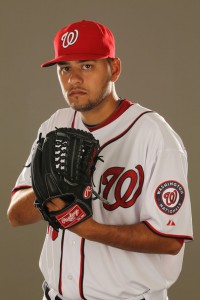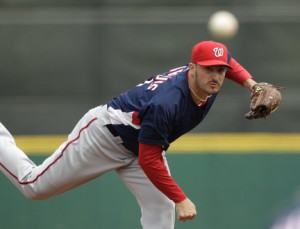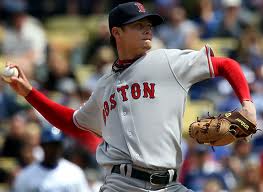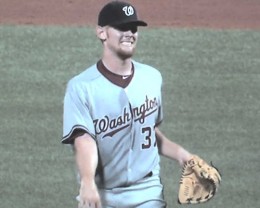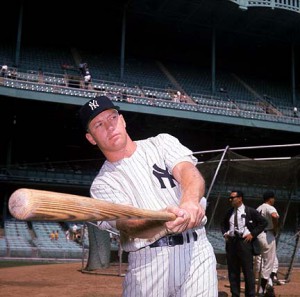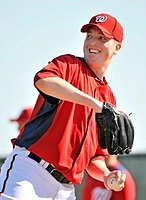There is always a risk of over-emphasizing early spring training statistics. But as an analyst or even a fan of a team, you’re in a catch 22. There are players out there clearly pitching to make the team and thus their statistics and results are important. Meanwhile, you have to keep in mind that for every homer Mike Morse hits off a legitimate major league starter, he’s hitting another one off a guy who is a non-40 man minor league filler player who is pitching that game just to fill out the innings. So, when looking at these results we try to put the performance into context. If a pitcher is going against a split squad and is facing 3 regulars and 6 minor leaguers, his performance obviously has a caveat.
In the 3rd week of spring training though, starters are getting “stretched out” and the teams are starting to look more like what they will in the regular season. So the good/bad/inconclusive starts to be more important. The Nats also managed to lose 6 of these 7 games, a troubling sign for the beginning of our season.
Here’s links to Week 1 and Week 2‘s Good/Bad/Inconclusive posts. And below are the links to running commentaries (when available), wrap-ups from beat reporters and box scores (if I can find them):
- 3/13: at Marlins (running blog/gamer/box score)
- 3/14: vs Tigers (running blog/gamer/box score)
- 3/15: at Mets (running blog/gamer/box score)
- 3/16: at Astros (running blog/gamer/box score)
- 3/17: at Braves (running blog/gamer/box score)
- 3/18: vs Cardinals (running blog/gamer/box score)
- 3/19: at Mets (ss) (running blog/gamer/box score)
The Good
- Doug Slaten: he had nice rebound appearance against the Tigers on 3/14. If he mis-fires, we always have Ron Villone (kidding. Maybe.)
- Tom Gorzelanny: looked significantly improved on 3/15 over his first appearance. Final line; 4 IP, 2 H, 1 R, 3 BB, 4 K, 65 pitches, 36 strikes. He clearly tired in the last inning, issuing two of the three walks and the run. No radar gun readings to be found but the observers say he looked like a completely different pitcher. Good.
- Brian Broderick: two quick, easy outings later in the week gives him only 1 earned run in 10 2/3 innings this spring. He’s looking like a steal of a rule5 pick and may just make this team as the long-man. Or perhaps at the expense of Drew Storen (see further down).
The Bad
- Elvin Ramirez: this rule-5 acquisition has yet to appear in a game and now has a sore-shoulder that may necessitate his starting the season on the DL. I know that Rule-5 draft picks are low-risk and low-cost, but on a team like the Nationals they don’t make a lot of sense. We’re not deep enough so that we can “hide” a guy all year (as we did with Tony Blanco back in 2005), and there are more deserving pitchers on this team for the few spots that aren’t guaranteed. Perhaps we can negotiate a trade with the Mets to keep him if the team really likes him. More likely he starts the year on the DL and gets returned if we cannot negotiate a deal.
- Craig Stammen‘s 3/15 outing was probably enough to guarantee his trip to Syracuse. He gave up 3 runs on 4 hits and a walk against a decent Mets lineup. He’s looking like 4th best out of 4 for the last bullpen spot.
- Tyler Clippard: His 3/16 outing was seriously disturbing. 1ip, gave up 4 hits (3 for extra bases), 2 walks, 5 runs … a disaster. He was quoted as saying that he “lost his concentration” but one would have to think that after perhaps the third or fourth baserunner he’d get it back in a hurry. He wasn’t exactly facing the elite of the league either in the 9th inning against (possibly) the worst team in the majors.
- Drew Storen: after a bounce back performance earlier in the week, Storen gets absolutely hammered by a bunch of Cardinals scrubs you’ve never heard of on 3/18. Not good. I’m beginning to wonder if he even makes the team at this rate.
The Inconclusive/Worrisome/Concerning
- Henry Rodriguez: On March 13th our possible-closer-acquisition pitcher was FINALLY set to appear in a game. He promptly lays an egg; 1/3 of an inning, 3 walks and a hit. Clocked at 97 though, so there’s that. Management has to be irritated with this situation; the guy has no minor league options and is basically guaranteed to be on the team, yet misses weeks of camp and shows up not in full throwing shape. If this guy bombs out (as the centerpiece of the Josh Willingham deal), we’ll have given up an awful lot of offense for next to nothing. In his next appearance on 3/17, he looked remarkably better; got his fastball up to 99, threw a couple wild pitches but got some Ks on a great 90mph change-up. Most described him as “effectively wild.” Which is the real Rodriguez?
- Colin Balester: Why has Balester only gotten 5 innings in 2 weeks? His role on this team (presumably to me) is to be the long-man out of the bullpen, the Miguel Batista role from last year. He’s being treated more like an 7th/8th inning guy. Is this indicative of his lowered chances of making this team? Perhaps the plan is to have option-less Gorzelanny in that role with Balester back in AAA (he has one option left). He did pitch 2 scoreless on 3/19 to finish up the week but seems destined for AAA to start the year.
- Ross Detwiler took a step back from his spring performances on 3/16 with this line: 3 IP, 4 H, 3 R, 2 ER, 2 BB, 71p, 43 strikes. He gave up 4 consecutive base-runners, struggled with a basic sacrifice attempt from the opposing pitcher, and reportedly wasn’t as crisp with his fastball velocity as in days past. Perhaps just an off day.
- Yunesky Maya: He showed nearly the velocity we want out of him on 3/17 against a strong Braves lineup (peaking at 92, sitting between 88-91 mostly). Not quite the 93 we were told he was hitting in the DWL but perhaps he was on a fast gun. He fell victim to that which plagued him last year; the big inning. He needs to find a way to mitigate the damage if he gets down in an inning.
- Jordan Zimmermann: 5 scoreless innings on 3/13 to run his spring training streak to 11. Good velocity, good movement on his curve. His 3/18 Outing was not as nice: 4 ip, 6 runs, 8 hits, 2 walks, 0 strikeouts, 2 wp, 69 pitches and 44 strikes. He was reportedly very wild and very hittable.
- Jason Marquis: He continued his great spring, goes 5 IP, 1 ER, 3 H, 2 BB, 4 K, 53 pitches, 38 strikes against the tigers on 3/14. And then he got absolutely hammered on 3/19, giving up 9 hits and 3 walks in less than 4 innings (3.2 IP, 6 ER, 9 H, 3 BB, 1 K, 1 WP, 79 pitches, 45 strikes). The first inning of 3/19 seemed to be part bad defense, part unlucky grounder locations, but he did have trouble locating his pitches all game.
Lots of “inconclusive” this week, as guys who looked good before put in bad performances. Lots of pitchers complain about a “dead arm” period late in spring training and perhaps that’s what we’re seeing overall. Next week’s games will be revealing.
